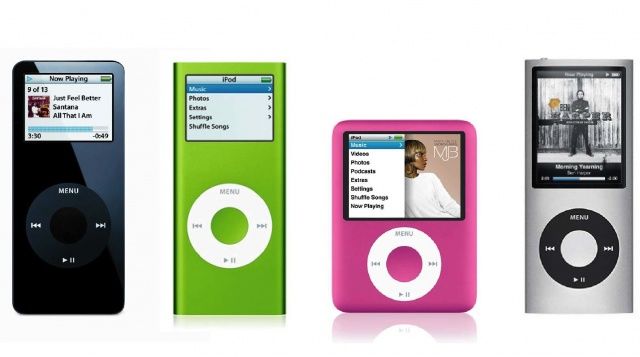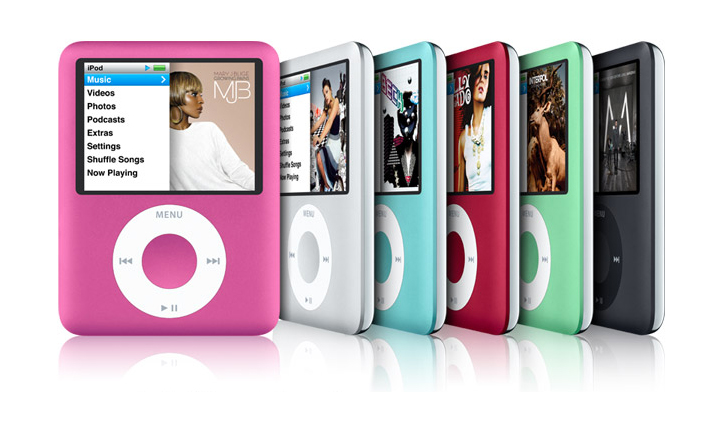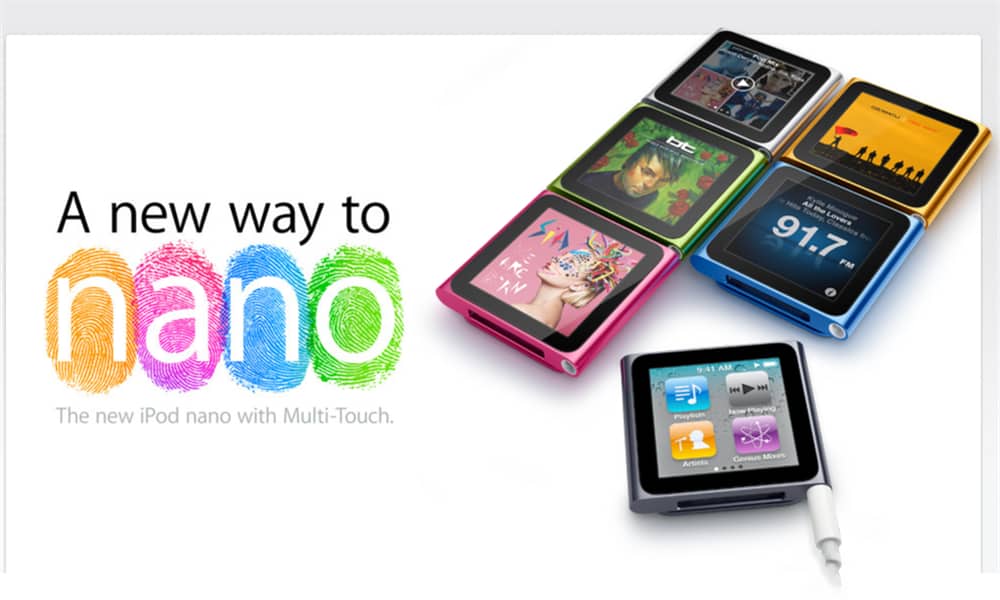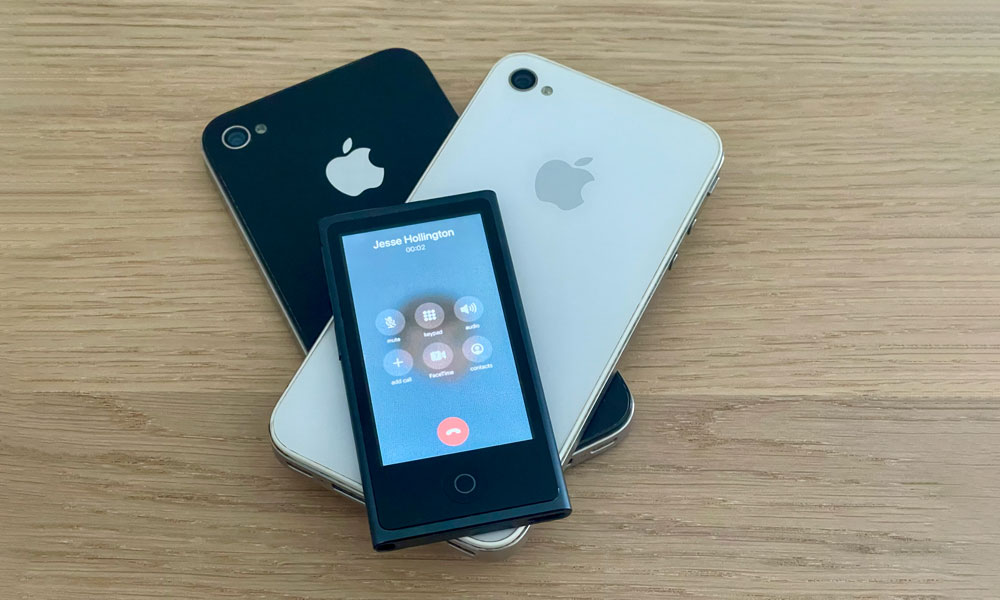The iPod nano Was Apple’s Playground for Ideas | Inside the Full-Screen iPod nano That Never Happened
 Credit: @aaple_lab / Twitter
Credit: @aaple_lab / Twitter
Toggle Dark Mode
It probably shouldn’t come as a surprise that Apple envisioned a mobile device with a full edge-to-edge screen years before the iPhone X came along.
During the early days of the iPhone, when Apple’s iPod lineup was still fairly dominant, Apple was exploring the idea of creating a version that would be one big display without a click wheel or any other front-facing controls.
This week, Tony Fadell, the “father of the iPod,” shared a photo on Twitter (shown below) of some 3D-printed mockups that Apple’s design team had created to throw around some different ideas.
While it’s not clear what era these mockups were from, the designs suggest that they predate the original iPhone. Three of the six strongly resemble the first-generation iPod nano, which Apple released in January 2005.
If that’s the case, then it means that Apple was spitballing ideas for full-screen devices at least more than two years before the debut of the first iPhone.
Of course, Apple never actually produced a full-screen iPod nano — at least not in that style. However, the iPod nano family also clearly became a “design playground” for Apple. It was the most varied single product lineup that the company ever produced and clearly served as an arena for Apple to experiment and try new ideas.
While the original iPod nano mirrored the design of its larger sibling, the fifth-generation iPod, by 2006, Apple had decided to start going in an entirely new direction.
The second iPod nano became much more colorful and gained an aluminum casing. The design was much closer to Apple’s popular iPod mini, a pocketable hard-drive-based player that the original iPod nano had been created to replace.
Then came the “fat” iPod nano in 2007, which Apple designed to look more like a miniature version of the full-sized iPod, which had also moved the same aluminum front that year. The full-sized iPod was also rebranded as the “iPod classic” to distinguish it from the brand new iPod touch released at the same time.
While the design of the third-generation iPod nano closely mirrored the iPod classic, the smaller iPod had more color options, including pink, blue, green, and (PRODUCT)RED, in addition to the silver and black of the larger iPod.
However, this design proved unpopular, so the following year, Apple returned to the more rectangular aluminum design in a new set of “Nano-chromatic” colors.

The fourth-generation iPod nano also added an accelerometer, introducing a “shake-to-shuffle” feature and allowing the iPod nano to detect when it was in landscape orientation.
In 2009 Apple started to get weirdly creative with the iPod nano family. It added a video camera to the fifth-generation iPod nano, albeit with minimal capabilities. The screen size increased slightly, but the design remained mostly the same, with the iconic click wheel for control.
Then, in 2010 the iPod nano went completely off the rails, with a new sixth-generation model that felt more like an early Apple Watch prototype. The camera was removed, and the click wheel disappeared in favor of a touch screen. It also lost support for video playback.
This was also around the time that Apple was reportedly contemplating the idea of an “iPhone nano.” Apple supposedly had some concept designs in mind, but for whatever reason, the idea never resulted in an actual product.
Instead, we ended up with the seventh-generation iPod nano in 2012. This last and final entry in Apple’s traditional iPod family really did look like a miniature iPhone. It had an iOS-like user interface (although it didn’t actually run iOS) and a home button. It even sported a Lightning port and Bluetooth 4.0, making it the only non-iOS iPod ever to include wireless capabilities.
The seventh-generation iPod nano also signaled the end of the iPod nano family. While it continued to be sold for five more years, with a minor color refresh in 2015, it was clear that by then, the world had moved on to the iPhone.
Tony Fadell’s Tweet is in part to promote his new book, Build: An Unorthodox Guide to Making Things Worth Making. Fadell discussed this early ideation process for the iPod nano in more detail. In the chapter titled Make the Intangible Tangible, he notes that building product models are “a way to trick your brain” and “jumpstart your imagination” so designers can start to picture how a product will become part of people’s lives.











